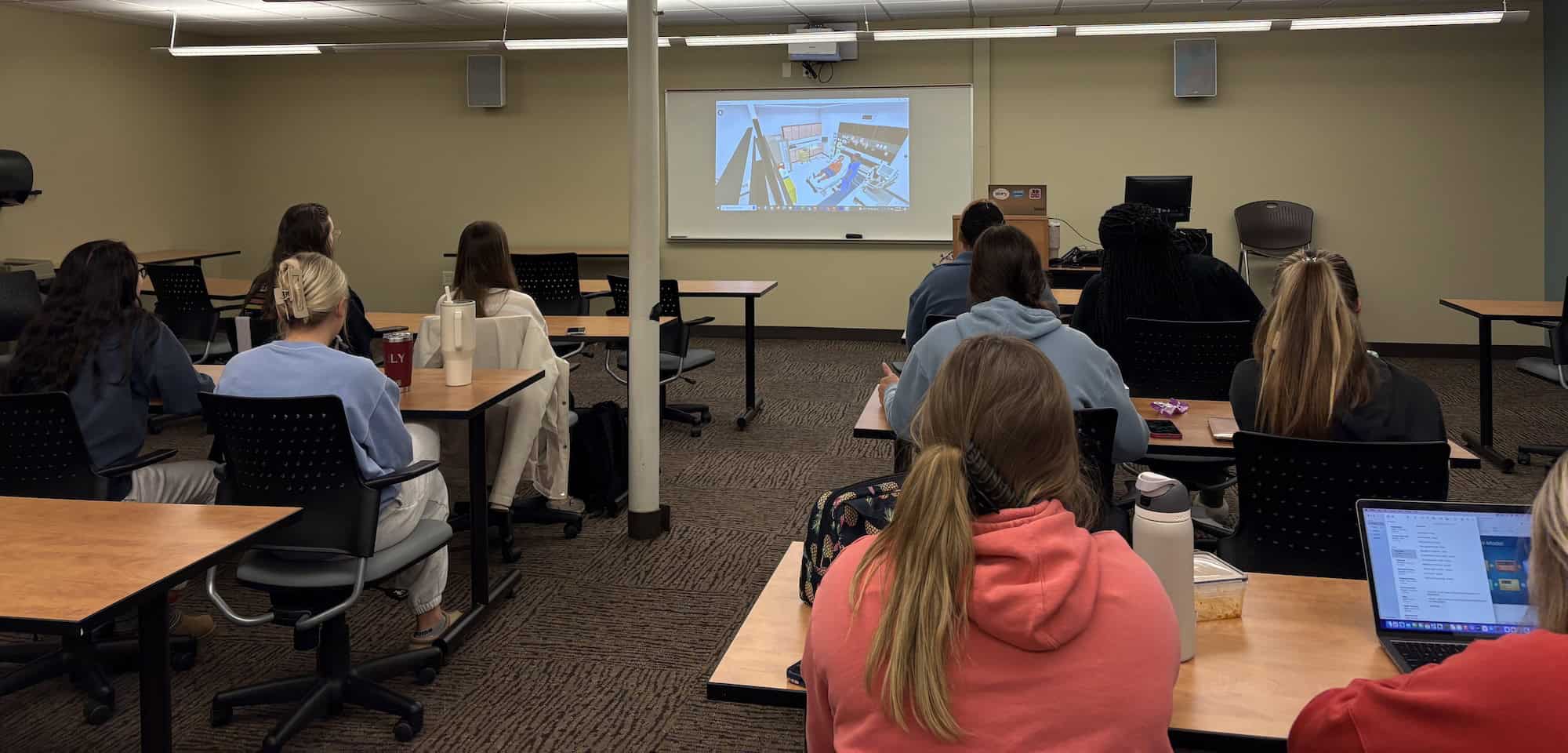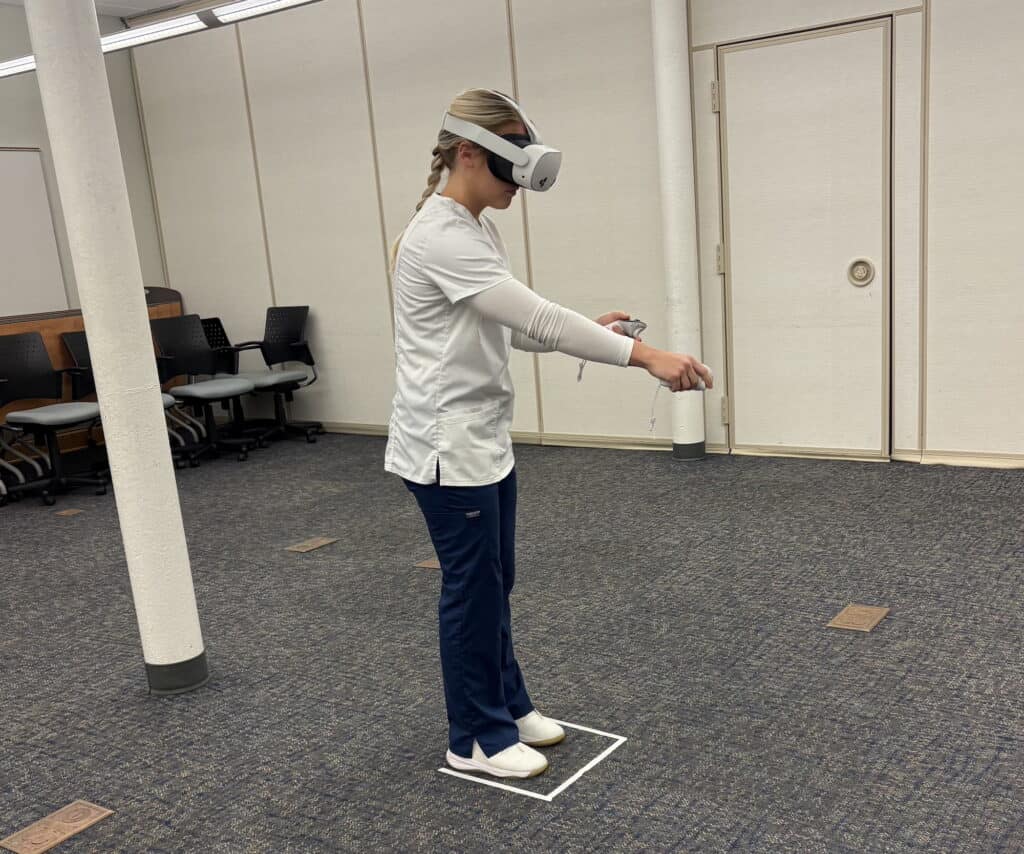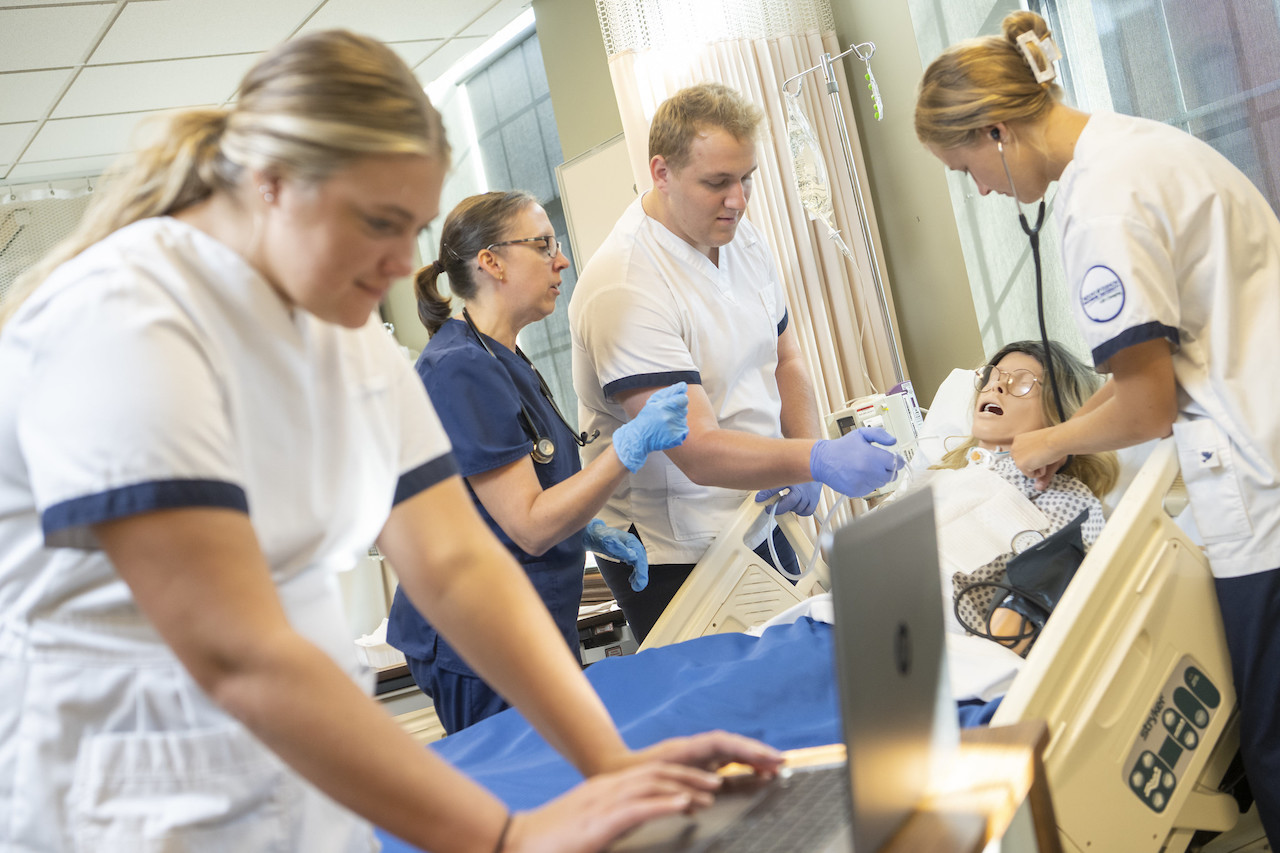MVNU Nursing integrates Virtual Reality into the curriculum
Mount Vernon Nazarene University is pleased to announce the integration of Virtual Reality (VR) simulation into its nursing program, providing students with an immersive and hands-on experience through cutting-edge technology.
April 30, 2025
- Press Releases
- School of Nursing and Health Sciences

Mount Vernon Nazarene University Assistant Professor of Nursing Esther Rudolph, not shown, demonstrates the new SimX Virtual Reality software to one of her classes this semester. The software, when paired with a Meta Quest VR headset, is changing the way students prepare for real life situations in a classroom setting.
MOUNT VERNON, Ohio — Mount Vernon Nazarene University is pleased to announce the integration of Virtual Reality (VR) simulation into its nursing program, providing students with an immersive and hands-on experience through cutting-edge technology.
Delivered through SimX, a leader in medical simulation, the VR environment allows nursing students to interact with lifelike patient scenarios using Meta Quest 3 headsets. Two students at a time step into a virtual patient room where they assess and treat patients, administer medications, apply oxygen, perform catheterizations, start IVs, and more. The simulations are designed to be highly realistic — students can listen to heart, lung, and bowel sounds and feel the palpation of a patient’s pulse.

“All the nursing students are being oriented to the VR environment this semester and participating in at least one VR simulation,” said Esther Rudolph, Assistant Professor of Nursing. “We have added a VR simulation to each nursing course throughout the curriculum. These scenarios range from basic to complex and are designed to enhance decision-making and focus on prioritizing patient needs.”
Scenarios introduced to the students this semester include patients with pre-eclampsia, sickle cell anemia, confusion/UTI, and falls risk.
“In addition, we added two in-class scenarios where a faculty member has the headset on, the patient room is projected onto the classroom screen, and students are involved in deciding what to do for the patient and directing the person in the headset to care for the patient,” said Rudolph. “We simulated a code experience for the seniors and introduced a basic scenario to the sophomores, both in the classroom setting. Also, for the seniors, they had the opportunity to care for four patients at one time in the VR setting. They had to prioritize which patient to see first, respond to critical assessment findings, and deal with interruptions within the VR environment that mimicked a hospital unit setting.”
By offering realistic, hands-on practice in a controlled setting, VR simulations improve critical thinking and better prepare students for the challenges of real-world nursing. MVNU’s investment in this innovative tool highlights its ongoing commitment to academic excellence and equipping future healthcare professionals with the skills they need to succeed.
For more about MVNU, visit mvnu.edu.


